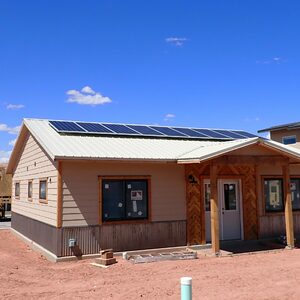
Image Credit: David Goldstein
“The California housing crisis is even worse than we thought… California is the hardest state in the nation for people to buy their first home.
“Since first-time home buyers are overwhelmingly younger people, the long-term results will have an enormous impact on the economic prospects of the next generation …”
Thus begins a strong editorial in the San Francisco Chronicle which suggests a number of thoughtful solutions that reduce the costs of housing, reduce greenhouse gas emissions, and promote economic development. The editorial cites a UC Berkeley study that pointed out that building the right kind of new housing — denser housing in urbanized areas near transit — would be one of the best ways for California to meet our 2030 climate goals.
“An infill-focused housing growth scenario provides the best outcomes for meeting the state’s climate goals while also producing economic benefits,” the Berkeley study concluded.
Policies to encourage higher density transit-oriented development with more multifamily buildings not only help potential homeowners, but also benefit renters by increasing the supply and thus reducing the cost of the kind of housing that new home buyers prefer: efficient homes in walkable and transit-served neighborhoods. These policies reduce restrictive land use regulations that currently prevent such projects virtually everywhere in California and nationwide, so they should appeal to conservatives.
Keeping housing affordable
But there is a problem that the editorial and the studies on which it is based ignore: how to make the new ownership housing “affordable.”
I put “affordable” in quotes because unless you have been through the process of purchasing a first home in an expensive neighborhood, you might think that “affordable” means “you can afford to make the payments based on your own cash flow.”
But in most cases “affordable” means, “the bank will lend you the money to buy it.” Lenders do not consider your cash flow. Instead they have rigid formulas in their black-box underwriting apps that look at people in your statistical class, rather than at your own cash flow. (This might be referred to as “profiling.”)
Part of the black box is a fixed ratio of payments to income, usually limited to about 30% of income. The app ignores questions of whether you spend 25% of your income on transportation and energy, which is typical for older homes in suburban sprawl, or less than 5%, which is typical of energy-efficient homes in walkable, transit-rich infill neighborhoods.
Changing the software to account for energy and transportation cost savings from living in a walkable, transit-rich neighborhood could be transformative: it could allow a new homeowner to “afford” to borrow an additional $300,000 or so, opening up their opportunities to buy a home, and making home ownership available to those with lower incomes than is the case today.
This increased “affordability” is important because housing in efficient neighborhoods costs the buyer more than it would in sprawl, everything else equal, since demand now outpaces supply.
Lending reform would boost development
Lending reform would also make new development in the right places more financially feasible for developers, so more new housing would be built. This eventually lowers the cost of housing in these areas. Thus it would also help solve the problems of gentrification at scale by allowing lower-income households to qualify for a mortgage; and as well as by increasing the supply of housing — something no other realistic policy that has been put forward can do.
And it would be less risky for the lenders: location-efficient homes default at much lower rates than inefficient homes, and the same is true for for energy-efficient homes.
Everyone would win: home buyers who are currently priced out of the market, or priced out of the neighborhoods they prefer, lower income potential buyers, lenders, investors in the mortgage backed securities that in turn own the new mortgages, developers and the real estate industry which can now sell more homes, and workers who can get construction jobs for new homes that would not otherwise be built and for energy efficiency upgrades to existing homes.
Why has this not happened? It is a mystery to me: no one undertakes the reforms, yet no one can explain why not.
This is not just a California problem. I am not aware of any place in the world that gets this right, despite housing prices in Paris, Seoul, and many other cities that are at comparable levels to San Francisco and Los Angeles.
David Goldstein is co-director of the energy program at the Natural Resources Defense Council, where this blog was originally published.
Weekly Newsletter
Get building science and energy efficiency advice, plus special offers, in your inbox.















One Comment
No 1 California needs to jettision Prop 8.
Some minor quips with the article:
"Part of the black box is a fixed ratio of payments to income, usually limited to about 30% of income."
-Actually it's usually limited to 45 percent of your gross income.
" The app ignores questions of whether you spend 25% of your income on transportation and energy, which is typical for older homes in suburban sprawl, or less than 5%, which is typical of energy-efficient homes in walkable, transit-rich infill neighborhoods.
Changing the software to account for energy and transportation cost savings from living in a walkable, transit-rich neighborhood could be transformative: it could allow a new homeowner to “afford” to borrow an additional $300,000 or so, opening up their opportunities to buy a home, and making home ownership available to those with lower incomes than is the case today."
-This is a ridiculous idea because just like energy efficient builders, lender's have no control over occupant behavior.
The problem with California is that zoning restrictions, Prop 8 and rent control create a disincentive for people to move, constrain the supply of dense multi-family housing, and create a disincentive of property owners to make improvements to existing real estate.
Log in or create an account to post a comment.
Sign up Log in